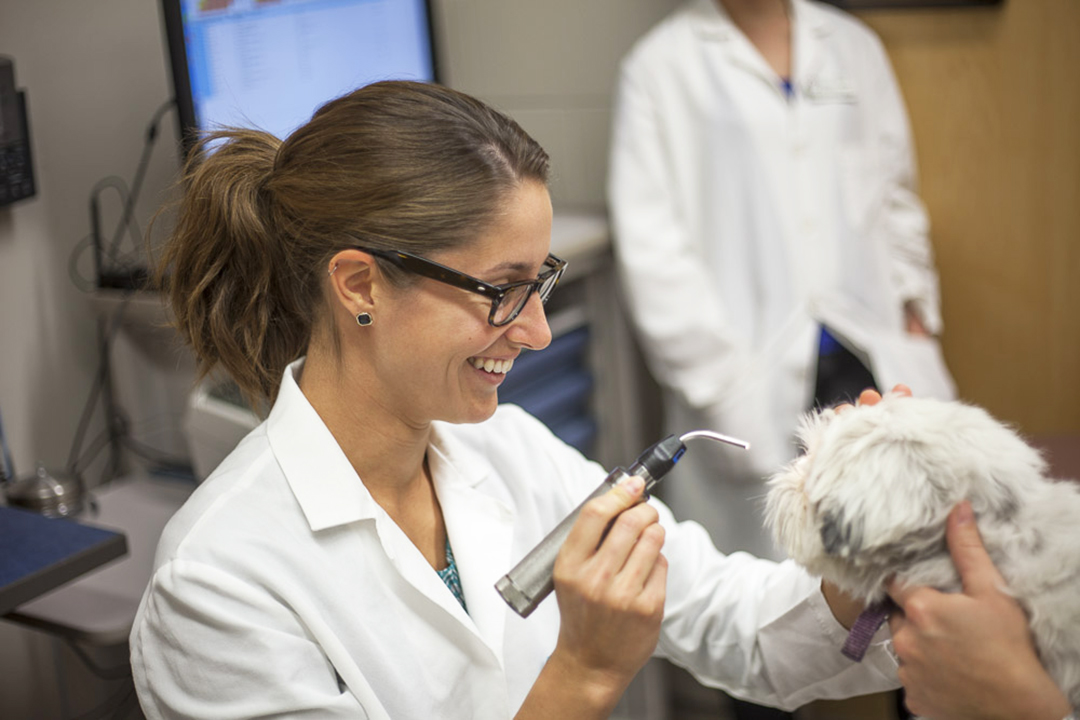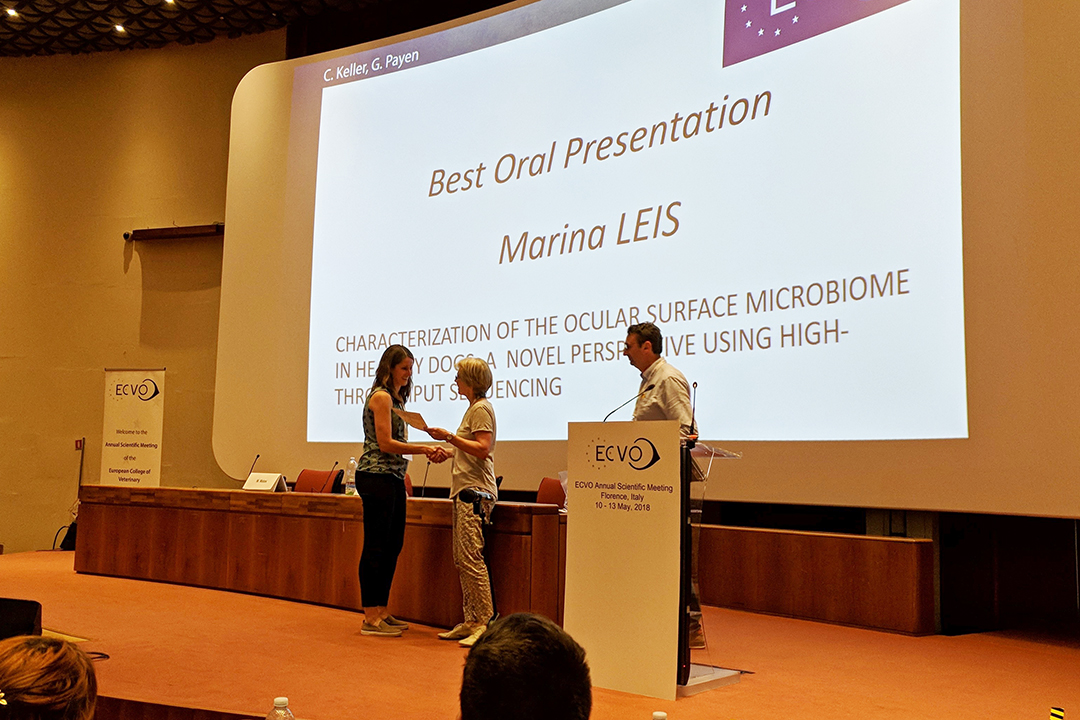
WCVM clinician-scientist earns global prize for eye-catching research
A Western College of Veterinary Medicine scientist and her team’s groundbreaking research earned international attention at the European College of Veterinary Ophthalmologists (ECVO) Congress in May 2018.
By Taryn RiemerDr. Marina Leis, a veterinary ophthalmologist and assistant professor at the WCVM, received best oral presentation for her discussion outlining her team’s work — an investigation of the ocular surface microbiome (the bacterial community found on the eye’s surface) of dogs.
“It was a really great experience,” says Leis. “This was the second time I’ve presented at the ECVO, a meeting that brings together veterinary ophthalmologists and scientists from across the globe.”
For Leis, the conference was a great place to not only present her team’s work, but to make connections and hear about the latest advances in the veterinary ophthalmology field. After her presentation, Leis also had colleagues approaching her for more details about her team’s novel research.
The WCVM researchers used a technique called high-throughput sequencing, which gives them the ability to detect all bacteria on the surface of the dog’s eye instead of just a few species.
“This has never been done before in dogs,” says Leis. “It has long been accepted that dogs mostly have Staphylococcus, Streptococcus and Bacillus species of bacteria living on their eyes. But with this new technique, we have determined that these bacteria actually make up less than three per cent of what’s on a dog’s eye.”
Leis explains this discovery is important because if veterinarians know what bacteria are present on a healthy canine eye, they can recognize what’s different in a dog with ocular disease and specifically target those bacteria species when prescribing medications. This could even have implications for how veterinarians can help prevent the development of antimicrobial-resistant bugs.
Now that Leis and her team have completed their pilot project and established a baseline of information, they plan to focus on two specific ocular diseases in dogs: dry eye (keratoconjunctivitis sicca) and corneal ulcers. The Companion Animal Health Fund has given Leis and Dr. Matheus Costa, her co-principal investigator, an $8,600 grant to complete this research study.
Leis says they eventually wish to study the bacterial microbiomes residing on the eyes of other animal species. For example, “pink eye” (infectious bovine keratoconjunctivitis) in cattle is a major concern for producers, and for years, it’s been presumed the disease is associated with the bacterium Moraxella bovis.
“But at the same conference there was a research presentation using the method of culturing a sample, an older technique, which discovered Moraxella bovis was the most common organism on healthy cows’ eyes,” says Leis. “So, there is something we’re missing and that’s just one example amongst many ocular diseases where we could try to understand what’s causing these diseases and really make a difference.”
Results from Leis’ work are expected to have an impact on both companion animals and, in the future, food-producing animals as well.

